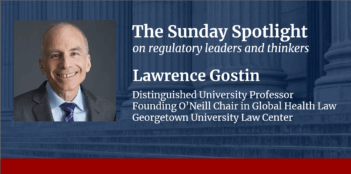
Scholars argue that Basel III Accords limited economic fallout from COVID-19.
When the COVID-19 pandemic first hit, some pundits feared the worst for the global financial system. Stocks took a record-breaking plunge. Millions of jobs evaporated seemingly overnight. And investors rushed to sell long-term investments for cash— a warning sign of economic collapse last seen before the 2008 financial crisis.
But two years after the outbreak of COVID-19, the global financial system has not collapsed. Instead, the stock market hit record heights in January and the global economy is rebounding quickly from the effects of the pandemic.
In a recent article, two economists argue that this economic resiliency vindicates the international financial reforms enacted after the 2008 financial crisis. Julia Giese and Andy Haldane of the Bank of England claim that the post-2008 reforms have allowed financial institutions to act as a “shock absorber” rather than a “shock transmitter” over the last two years.
Giese and Haldane credit much of the shock absorption to the Basel III Accords, which were signed in 2011 by 45 countries, including the world’s leading economies. Basel III obligates signatory countries to set standards for financial institutions to ensure they can better weather financial crises.
Basel III has improved the strength of the financial system in two main ways, according to Giese and Haldane.
First, Basel III requires countries to implement micro-prudential regulations—those that improve the financial stability of individual financial institutions. Two micro-prudential regulations that Giese and Haldane highlight from Basel III are higher leverage ratios and liquidity requirements.
Increasing the required leverage ratio means banks need to maintain a higher reserve of their own money relative to the amount they lend out. A higher liquidity requirement requires more of a bank’s assets to be “liquid,” or easily convertible to cash. These requirements ensure that, if many of a bank’s borrowers cannot repay their loans (as occurred during the 2008 financial crisis), banks still have cash on hand to lend out.
Second, Basel III requires countries to implement macro-prudential regulations, which are designed to preserve the stability of the financial system as a whole. Prior to the 2008 crisis, regulators generally looked only at the risk of individual banks failing. Giese and Haldane contend that this approach created a domino effect that caused otherwise healthy banks to fail in 2008 when institutions they traded with went under.
Basel III’s macro-prudential regulations mitigate this risk by ensuring banks have enough money to guard against this falling domino scenario, Giese and Haldane argue. They identify two key macroprudential regulations imposed by Basel III: countercyclical capital buffers and systemic risk buffers.
A countercyclical capital buffer means that banks are required to hold more money—rather than lending it out—during times of economic growth. If a recession hits, authorities can lower this buffer, allowing banks to lend out the money they held onto.
A systemic risk buffer requires larger banks with a higher importance to the financial system to keep more money on hand. Ensuring the stability of these banks will help prevent a cascading bank failure like the 2008 financial crisis, according to Giese and Haldane.
The COVID-19 pandemic tested these requirements for the first time—and they worked as intended, Giese and Haldane contend. Many countries cut their countercyclical capital buffers, which gave banks sudden access to large reserves of money to lend out—the opposite of the situation in 2008, when banks hoarded cash.
Although the Basel III system arguably passed its first test, Giese and Haldane point to several improvements regulators could make to protect against future threats. They argue that regulators should impose similar requirements on institutions such as hedge funds and asset managers, which make up an increasing share of assets globally.
They also contend that regulators should closely monitor the rise of FinTech companies. Although these companies offer similar services to banks, they oftentimes face looser regulation.
In addition, Giese and Haldane argue that banks should face increased “stress testing,” where regulators simulate whether the institution would survive financial crises of varying levels. Stress tests have served as an important post-financial crisis tool for regulators, and their results largely held up during the COVID-19 pandemic. But Giese and Haldane argue that regulators should account for scenarios potentially even more damaging to the global economy, including increasing natural disasters and cyber-threats.
As memories of the financial crisis and COVID-19 fade, regulators will face pressure to relax regulations, Giese and Haldane predict. But the resiliency of the financial system during the pandemic demonstrates to them the essential role that regulation plays in protecting the global economy of the future.



